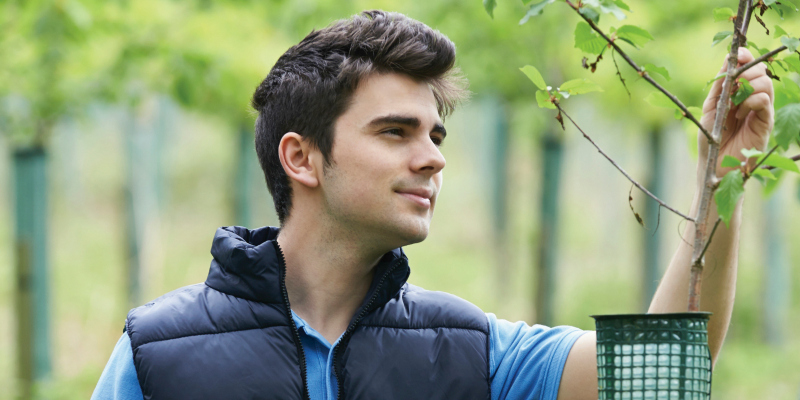By Kathryn Wisniewski
A green and shady tree cultivates serenity on a city street but knowing how to care for the lifelong investment of our natural arbors can be difficult.
Arborists provide expert advice on everything from deciding if a struggling tree needs to be removed to knowing exactly what species of tree to plant.
“I think anyone who has mature trees should have an arborist in their life,” says Briana Frank, owner of Tree Health Management.
Fall is one of the best times for homeowners to plant new trees on their property, Frank says. Trees have a lower water requirement in autumn than in the hot months, which takes some pressure off the homeowner to water the tree continuously after planting.
When it comes to choosing a species to plant, Frank stresses the importance of ensuring the tree has enough space to grow to its full size. Planting large trees under power lines or other obstructions, for example, can hinder the tree’s growth as it matures.
Another consideration to take into account is the soil conditions of your property.
“If you have a wet site, you want to make sure you have a moisture-loving tree,” Frank says.
After selecting the species and the location for a new tree, Frank recommends purchasing a tree cultivated in Wisconsin soil. Trees at a nursery can come from all over the country but ensuring that your sapling has been raised in-state increases its chance of surviving its first Wisconsin winters.
When everything relating to planting is said and done, Tree Health Management reminds its property owners that trees need care.
Frank advises homeowners with already mature trees to have them inspected. She says that trees have a lag time in showing symptoms, so by the time an untrained eye sees distress in the tree, such as a rotting limb, the tree has likely been experiencing stress for several years. An arborist will also know what diseases or insects your species of tree is most prone to.
“A lot of the issues that we have in mature trees in urban settings is because they weren’t cared for when they were young,” Frank says.
Preventative care, such as correcting structural issues of the tree, should be performed when the tree is small, Frank says, though many people don’t know that trees need care that early in their lives.
“You can really do this tiny amount of preventative care all along, and that’s how we get trees to have the best structure” to survive storms and fit well adjacent to homes and other buildings, Frank says.
If properly cared for throughout the years, trees give so much to urban spaces, from absorbing rain water to purifying the air. Planting and caring for trees is “not a small decision. It’s a decision that affects generations,” Frank says.
Arbor Equity: The Urban Tree Alliance plants trees for free
The wide-ranging benefits of urban trees, from cooler summer temperatures to increased property values, are not evenly distributed, with low-income neighborhoods often having less canopy cover. The Urban Tree Alliance is working to fill in the gaps by planting trees on residential lots in targeted neighborhoods, as well as school grounds and Community Development Authority properties.
Under the mantra “Trees for All,” the Madison Canopy Project, one of the alliance’s programs, provides one or two trees to homeowners in select neighborhoods for free. A map and list of the 18 neighborhoods included in the project can be found on the alliance website, urbantreealliance.org.
From the Madison Rotary Club to school parent-teacher organizations, individual teachers or neighborhood associations, the alliance works with hundreds of people throughout the community. One message they convey to all is the importance of species diversity, which increases urban forest resilience, says Jeremy Kane, director of the Urban Tree Alliance.
The potential for pests or fungi to wipe out a wide cross section of the urban tree population decreases with more diversity of trees. Too few species could spell disaster if an infection or infestation wipes out one of them. Madison is still dealing with the effects of an emerald ash borer infestation that took out a big chunk of the city’s ash trees. Madison uses a 10% genus diversification goal, Kane says, which means the ideal is to have no more than 10% of the trees in Madison be any one type, whether that be maples, oaks or any other variety of tree.
For this reason, the Urban Tree Alliance doesn’t plant maple trees. This doesn’t mean that maples are bad, but there are already a lot of them. “I have maples in my front yard,” Kane says, “but the idea is to avoid having too much reliance on one species or genus, so that’s the real push for diversity and just an opportunity to experiment with trees in Madison.”
Spreading the stewardship of the urban canopy, amid species of trees and amid people in the community, strengthens the future of trees in Madison, which we can all enjoy.




